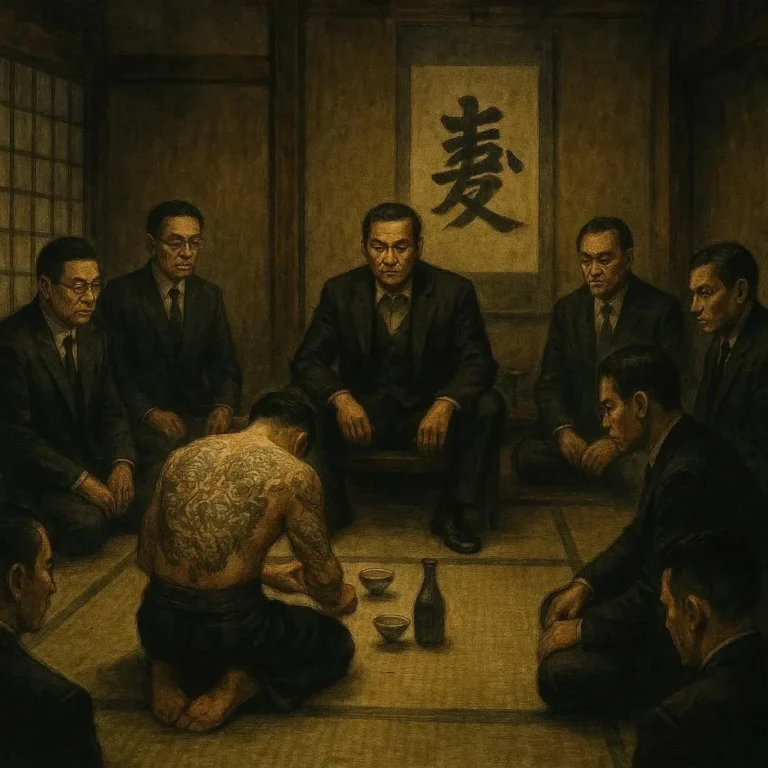505 views The Decline and Resurgence of the Yakuza in Modern Japan
The Yakuza, Japan’s enigmatic organized crime syndicates, have long fascinated the world with their intricate tattoos, strict code of honor, and mysterious hierarchies. Once a formidable force with deep roots in Japanese society, the Yakuza experienced a significant decline in the late 20th century, only to see a resurgence in recent years. This dynamic shift raises questions about their role in modern Japan, their adaptability to changing times, and their enduring allure despite attempts to suppress them. In this blog post, we delve into the history of the Yakuza, explore the factors behind their decline, and examine the reasons for their unexpected resurgence in contemporary Japan.
The Historical Background of the Yakuza
The origins of the Yakuza can be traced back to the Edo period (1603–1868), when groups of outcasts and misfits formed loose associations to survive in a rigidly stratified society. These early Yakuza were often seen as Robin Hood figures, stealing from the wealthy and giving to the poor. Over time, their influence grew, and by the mid-20th century, they became a major force in Japan’s criminal underworld.
The Yakuza’s structure is highly organized, with a strict hierarchy that mirrors traditional Japanese society. At the top is the oyabun (father figure), followed by wakagashira (lieutenants), and then the ordinary members. Loyalty, discipline, and an unwritten code of conduct known as giri and ninjo (duty and compassion) are the cornerstones of Yakuza ethics.
The Decline of the Yakuza
The late 20th century marked the beginning of the Yakuza’s decline. Several factors contributed to this downward spiral:
Legal Crackdowns: In 1992, the Japanese government introduced the Anti-Boryokudan Law, targeting organized crime groups. This legislation made it easier for authorities to prosecute Yakuza members and dismantle their operations.
Economic Downturn: Japan’s economic bubble burst in the early 1990s, leading to widespread financial instability. The Yakuza, who had heavily invested in real estate and construction, saw their fortunes dwindle.
Changing Social Attitudes: As Japanese society became more Westernized and individualistic, the Yakuza’s traditional code of honor lost its appeal. Younger generations were less drawn to the strict hierarchy and dangerous lifestyle associated with the Yakuza.
Internal Conflicts: The Yakuza’s rigid structure led to infighting and power struggles, further weakening their overall strength.
The Resurgence of the Yakuza
Despite these challenges, the Yakuza have shown remarkable resilience and adaptability in recent years. Their resurgence can be attributed to several factors:
Diversification of Activities: The Yakuza have expanded into new industries such as real estate, finance, and even renewable energy. This diversification has allowed them to remain relevant in a changing economic landscape.
Aging Population and Labor Shortages: Japan’s aging population and tight labor market have created opportunities for the Yakuza to recruit new members, particularly among disaffected youth and foreign workers.
Public Perception: While the Yakuza are still viewed with suspicion by many, their role in maintaining order in certain communities has earned them a degree of grudging respect. Some Japanese citizens see them as a necessary evil in a society struggling with social cohesion.
Adaptation to Technology: The Yakuza have embraced modern technology, using encryption and online platforms to conduct their activities discreetly. This has made it harder for law enforcement to track them down.
Cultural Revival: The romanticized portrayal of the Yakuza in films, television dramas, and video games has sparked a renewed interest in their culture, particularly among younger generations.
The Current State of the Yakuza
Today, the Yakuza operate in a more subdued manner, avoiding the flashy displays of wealth and power that once drew attention. They have learned to blend into the background, conducting their activities with greater caution and subtlety. However, their influence remains significant, particularly in sectors like construction, entertainment, and cybersecurity.
The Japanese government continues to view the Yakuza as a threat, but efforts to eradicate them have been largely unsuccessful. The Yakuza’s ability to evolve and adapt has allowed them to survive in a rapidly changing world.
Conclusion
The Yakuza’s story is one of resilience and reinvention. From their humble beginnings as outcasts to their rise as a powerful criminal syndicate, and from their decline in the late 20th century to their resurgence in modern Japan, the Yakuza have consistently demonstrated an ability to adapt and thrive. While their role in society remains contentious, their enduring presence is a testament to their resourcefulness and the complexities of human nature.
As Japan continues to grapple with economic, social, and demographic challenges, the Yakuza will likely remain a significant player in its shadows. Whether their resurgence is a temporary phenomenon or a sign of a more permanent revival remains to be seen. One thing is certain, however: the Yakuza’s story is far from over, and their legacy will continue to shape the fabric of Japanese society for years to come.







